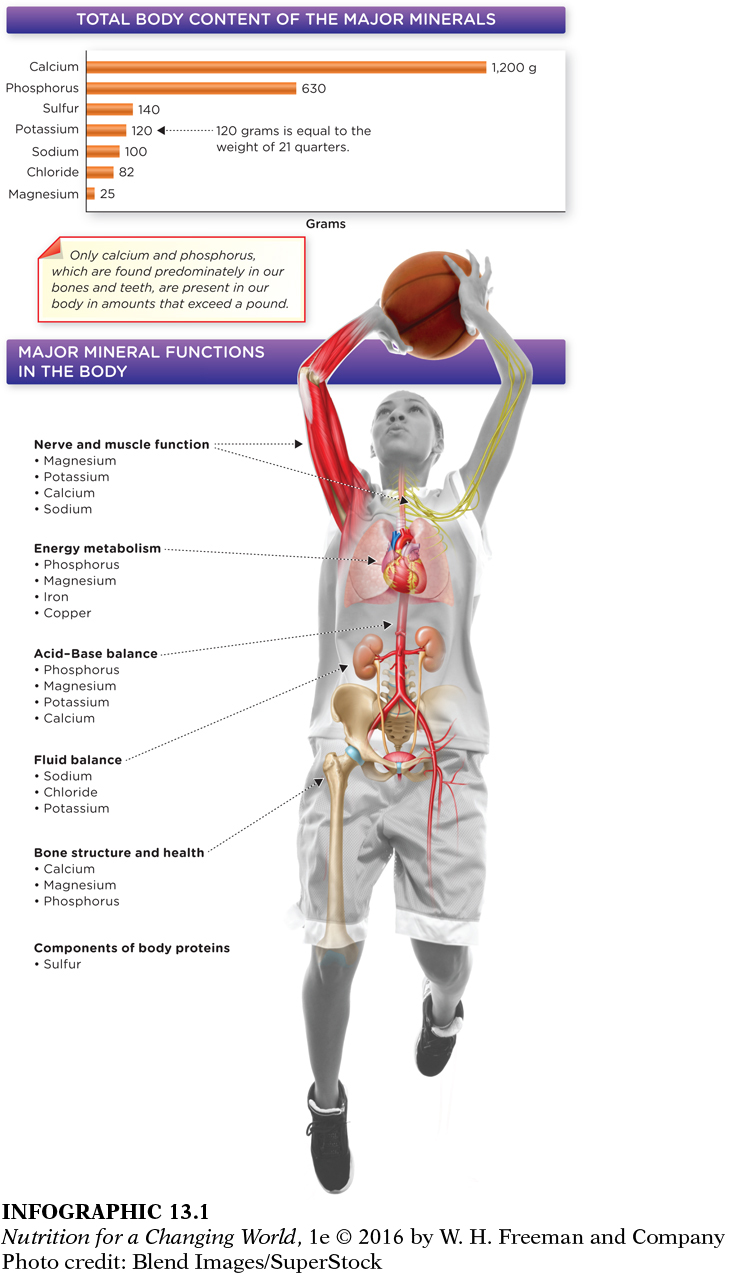OVERVIEW OF THE MINERALS
MAJOR MINERALS minerals with a daily requirement of 100 milli-
TRACE MINERALS minerals with a daily requirement of less than 100 milligrams: iron, zinc, copper, iodine, selenium, molybdenum, fluoride, manganese, chromium
Essential minerals are categorized according to how much we need each day: major minerals (sometimes called “macro” minerals) have a daily requirement of 100 milligrams or more, and trace minerals (sometimes called “micro” minerals) have a daily requirement of less than 100 milligrams. The major minerals include sodium, potassium, chloride, calcium, magnesium, phosphorus, and sulfur; the trace minerals are iron, zinc, copper, iodine, selenium, molybdenum, fluoride, manganese, and chromium (see Chapter 14). Overall, minerals make up about 4% of our body weight, with major minerals composing more and trace minerals composing less. But don’t let the names fool you: Both major and trace minerals play equally critical roles in human health. (INFOGRAPHIC 13.1)
285

Minerals have diverse regulatory and structural functions. Many work in partnership with other minerals. They often function as parts of enzymes and hormones, participate in chemical reactions, transmit nerve impulses, maintain fluid balance, and support the immune system. They can also work with enzymes as cofactors, inorganic substances that facilitate and catalyze chemical reactions. Like many of the B vitamins, minerals also play roles in energy metabolism, the chemical reactions that release energy from food. Minerals also help build and maintain structural components in the body such as bones, teeth, cell membranes, and connective tissue.
IONS elements that carry a positive or negative charge
Minerals are ions, elements with a positive or negative charge due to their unequal numbers of electrons and protons. The charges of mineral ions, whether positive or negative, allow them to participate in chemical reactions and bond with other molecules.
Minerals can’t be synthesized by the body, so they must be ingested through diet. Yet they also have a narrow range of safe intake, so there’s often a fine line between getting too little and too much of a mineral. We couldn’t live without any sodium, for instance, but we often get too much of it along with too little potassium, which increases the risk for high blood pressure and chronic disease. Intake of minerals above the recommended levels can also have other adverse effects including gastrointestinal problems. With the possible exception of sodium, we are at greatest risk of consuming too much of a particular mineral when we take dietary supplements, as overconsumption rarely occurs through food alone.